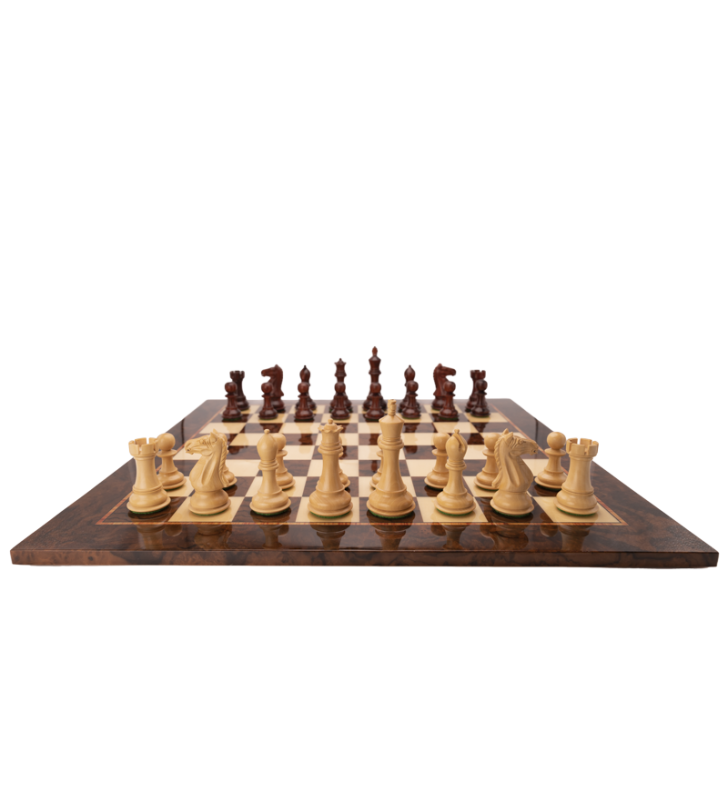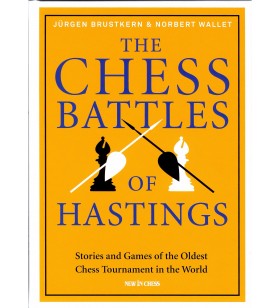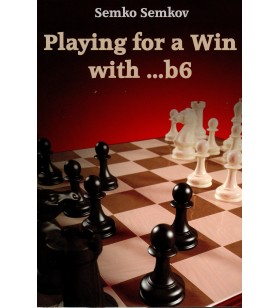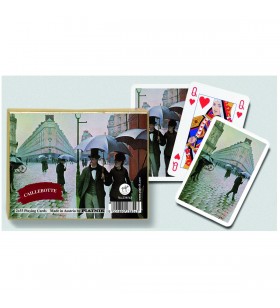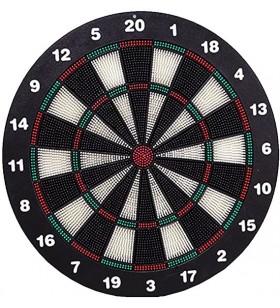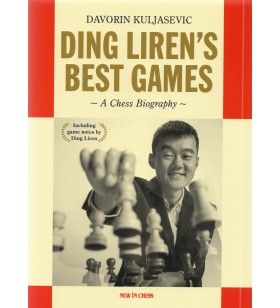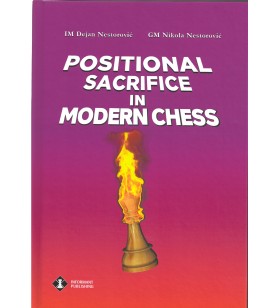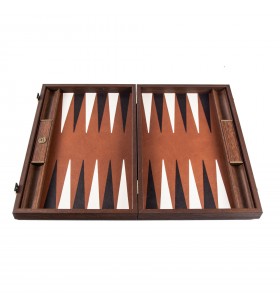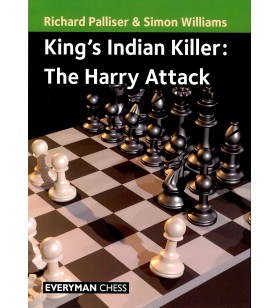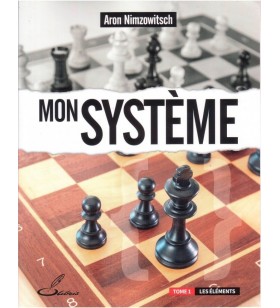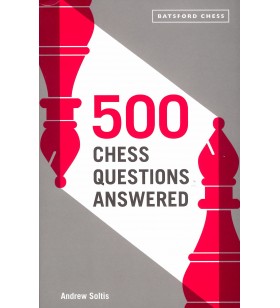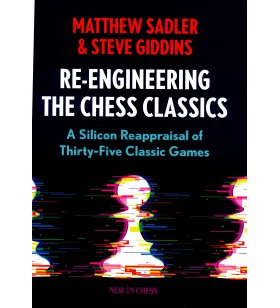- CHESS
- Chess boards and pieces
- Chess books
- Chess books in English and others
- Opening books
- The Ruy Lopez
- Other open games
- Other semi-open games
- The Sicilian
- French Defence
- Pirc & Modern Defence
- Caro-Kann
- Queen´s Gambit
- Slav Defence & Semi-Slav
- Other closed games
- Other semi-closed games
- King´s Indian Defence
- Nimzo & Queen´s Indian
- Grünfeld
- English Opening
- Dutch Defence
- Miscellaneous openings
- General and repertoire books
- Endgame books
- Books on grandmasters
- Books on tournaments
- Books in Dutch
- Miscellaneous
- Chess magazines
- General and middle game books
- Opening books
- Chess books in French language
- Chess books in English and others
- Chess software and DVDs
- Chess computers
- Equipment for clubs
- BOARD & BRAIN GAMES
- GO
- BRIDGE & CARDS & TAROT
- POKER & CASINO GAMES
- PUZZLES & BRAIN TEASERS
- DARTS
Set combinations Supreme Anjanwood
This wonderful set of pieces has been made with anjanwood (it's like rosewood), the pieces are handcrafted, felted and double weighted.
A total of 34 pieces (2 extra queens). Size of king is 10.50 cm and diam. of 4.5 cm
The board is handmade in Italy and it is a very hight quality product. It is walnut burr wood, the light squares are crafted form the maple veneers and, complete with the high gloss finish. Chess board is 54 cm and each square is 5.5 cm
It is the perfect companion of the supreme set of pieces.
 Livraison sous 48 heures via Bpost*
Livraison sous 48 heures via Bpost*
Livraison gratuite à partir de €69 (Belgique, France, Pays-Bas, Luxembourg, Allemagne)
 You can cancel your order
You can cancel your order
For fourteen days!
 Secure payments
Secure payments
All payment cards accepted.
16 other product
Cartes Bicycle Rider Back
Jeu de 54 cartes Bicycle. Egalement disponible avec un dos bleu (le préciser dans les remarques lors de votre commande).
Semkov - Playing for a win with ... b6
Playing for a win with ...b6 by Semko Semkov. The author proposes a full repertoire against 1.d4 and 1.c4, which is theoretically sound and leads to sharp, strategically unbalanced positions. It is based on the so-called English Defence 1.d4 e6 2.c4 b6 or 1.c4 b6. A great deal of the book is devoted to White's tries to deviate from theoretical dispute and transfer the game into the Queen's Indian with g3. 236 pages
Kuljasevic - Ding Liren's Best Game
On 30 April 2023, in Astana, Kazakhstan, Chinese grandmaster Ding Liren sensationally defeated Russia’s Ian Nepomniachtchi in a dramatic battle for the chess crown. Ding Liren not only became the 17th World Chess Champion, but he also won the hearts of chess fans across the globe with his incredible fighting spirit and disarming interviews. At the final press conference, the new champion said the match ‘reflected the deepest of his soul’.
Humble and almost vulnerable in his demeanour, Ding Liren is a formidable fighter with a rich inner chess world. Throughout his career, his creative output has been immense. His games feature outstanding precision, rationality and superior endgame technique on the one hand and a talent to find brilliant, imaginative solutions on the other. His stoicism in the face of adversity and ability to quickly learn from mistakes and adapt to his opponents is unique.
Few chess greats can boast that they reached first place in both the blitz and rapid world rankings and became World Champion in classical chess. Even fewer can claim an unbeaten streak of 100 classical games. That’s how special Ding Liren is.
In this best games collection, grandmaster Davorin Kuljasevic follows and explores Ding Liren’s rise from his first chess steps in provincial China to the top of the chess world. Making no secret of his admiration for this extraordinary chess genius, the author describes Ding Liren’s successes and setbacks and how these experiences shaped him as a player and a person. 328 pages
Davorin Kuljasevic is an International Grandmaster born in Croatia. He graduated from Texas Tech University and is an experienced coach. His first book Beyond Material: Ignore the Face Value of Your Pieces was a finalist for the Boleslavsky-Averbakh Award, the best book prize of FIDE, the International Chess Federation. His second book, How To Study Chess on Your Own, was an international bestseller.
Nestorovic - Positional sacrifice in modern chess
Positional Sacrifice in Modern Chess (hardcover). A Word from the Authors : "The sequel, or the second part of the “Secrets of Positional Sacrifice” manual is titled “Positional Sacrifice in Modern Chess”. We assume that readers will conclude that the subject of our analysis are recently played games, especially the games played over the last few years. The book is intended for chess players who aspire to raise the level of positional play in this particular field of expertise, as well as coaches working on chess education. Like the previous book “Secrets of Positional Sacrifice”, the book in our hands is divided into chapters according to the material that is the subject of the sacrifice: the positional sacrifice of a pawn, exchange, piece, rook, and queen. Finally, the last chapter deals with “hot games” and contains six games played during November and December 2021. We believe that the book is as interesting and instructive as its prequel. However, the examples are a tad more complicated, primarily because of the positional rook sacrifice section. In actual fact, the examples on this kind were verydifficult to find in practice, and processing them in the right way was a particular challenge for us. The first section, the positional pawn sacrifice, should encourage the reader to execute one of the most complicated positional sacrifices in practice as often as possible. On the other hand, the sacrifice of exchange is the most common and easiest to apply and can very successfully serve as a means of relieving the fear of possible sacrifice of material. Asymmetric positions, i.e., positions with an unusual distribution of material, are mostly featured in the positional piece and queen sacrifice positions. In the last chapter entitled “Hot Games,” we present the analysis on the topics of various fascinating examples, from the latest games of today’s great players. We tried to choose the examples that were easy to follow, so they are embellished with diagrams and explained verbally as well. We paid more attention to the analysis of the positional sacrifice from the moment of its execution to the end of the game. Hence, the introductory part of each example may be somewhat shorter in relation to the first book. Finally, the invaluable exercises at the end of the book should be mentioned. The tasks cover four topics to make them as interesting and easy to solve as possible. The exercises are based on the correct assessment of asymmetric positions and, of course, on concrete calculations. In conclusion, we would like to emphasize that the book highlights the beauty of human ideas and their practical application. In some cases, the authors give preference to the human idea over the assessment of the computer. When a player cannot calculate complicated lines accurately, he should look for an alternative solution of the similar quality. One of the possible answers is the positional sacrifice that leads to asymmetric material and thus the change of the character of the fight. " 307 pages
Bezgodov/Barsky - The scotch game a white repertoire
The Scotch Game is a solid opening that has been tried and tested in practice by some of the strongest chessplayers in the world for more than two centuries. The idea behind the Scotch Game is simple and easily understandable. White eliminates – in a purely mechanical fashion – Black’s e5-pawn which initially impedes his ambition to dominate in the center.
This is very appealing for White, as he controls the direction of the struggle’s development, while Black can only try to keep pace. Furthermore, there are relatively simple schemes in the white repertoire in which it is enough to remember the main plans of both sides and typical maneuvers.
This is the second edition of Vladimir Barsky’s book that first appeared in 2009. The new edition consists of seven chapters dealing with the core ideas and variations of the Scotch, supplemented by 79 Illustrative Games. The authors not only present detailed analysis of all lines but are also careful to discuss the ideas behind the opening. If you already play the Scotch, you need this book. If you don’t, find out what you have been missing. 224 pages
Backgammon Caramel Brown
Caramel Brown with Ivory and Dark Brown.
Leatherette Collection has a refined, elegant appearance while maintaining all of the unique advantages of premium quality eco leather, especially when it comes to noise reduction and durability.
This backgammon is handmade using the art of marquetry (also spelled as marqueterie) which is the art and craft of applying pieces of veneer to a structure to form decorative patterns and designs.
Size closed is 48 x 30 cm
PALLISER, WILLIAMS - KING'S INDIAN KILLER: THE HARRY ATTACK
Do you want a simple and practical method to counter Black’s kingside fianchetto defences after 1 d4? A line that takes the initiative from a very early stage and creates difficult practical problems? If so, then The Harry Attack (1 d4 Nf6 2 c4 g6 3 h4!) is for you.
At first this looks like some sort of joke or, at the very least, a weird outlandish line. Aren’t we all taught to focus on development and control of the centre in the early stages? What’s 3 h4 got to do with that?
Perhaps surprisingly, this is a very difficult line for Black to counter effectively. This applies not just in practical play but also theoretically, where it is far from straightforward for Black even to find a route to equality. And when Black gets it wrong they are often on the receiving end of a very unpleasant miniature.
You may be thinking that surely the best chess engines can show how to counter this line? No! One of the unexpected features of leading engine play is their enthusiasm for shoving the h-pawn up the board and they fully concur that 3 h4! is a very decent move for White. Many leading players have taken the hint and 3 h4 is frequently seen at elite level.
Richard Palliser and Simon Williams (the GingerGM) provide a thorough guide to this fascinating line. They show how to adapt when Black chooses a King’s Indian set-up, a Grünfeld set-up, a Benoni set-up or even plays in Benko style.
The Harry Attack is easy to learn and is perfect for unsettling players steeped in the theory of their favourite Indian defences. 238 pages
Sadler/Giddins - Re - Engineering the chess-classic
out of print
Are you ready for new strategic insights about thirty-five of the most fascinating and complex chess games ever played by World Champions and other top grandmasters? Grandmaster Matthew Sadler and renowned chess writer Steve Giddins take a fresh look at some classic games ranging from Anderssen-Dufresne, played in 1852, to Botvinnik-Bronstein (1951) and Geller-Euwe (1953). They unleashed the collective power of Leela, Komodo and Stockfish to help us humans understand what happened in games of fan favourites such as Boris Spassky, Mikhail Tal, Bent Larsen and Bobby Fischer.
The first chess engines improved our appreciation of the classic games by pointing out the tactical mistakes in the original, contemporary game notes. But the expertise of Matthew Sadler is to uncover the positional course of a game with the help of the second generation of chess engines that emerged after 2018.
This book will change your perception of these games’ strategic and technical patterns. You will, for example, learn to appreciate and understand a classic Capablanca endgame. And a classic Petrosian exchange sacrifice. And a winning, and then losing, king-hunt endgame between Spassky and Tal. You will see how Larsen already understood the strength of the h-pawn march far before AlphaZero’s revelation. The engines offer new strategic ideas and plans that human players have yet to consider. Even the ‘the best ever anti- King’s Indian player’, Viktor Korchnoi, would be amazed by the engine’s unique ideas about White’s breakthroughs on the queenside.
The most instructive games are often those which are more strategic and technical. Using modern engines, the authors have re-engineered a wonderful collection of classic games, generating dozens of positional chess lessons that will help every club player and expert to improve their game. 440 pages

 Français
Français Nederlands
Nederlands English
English